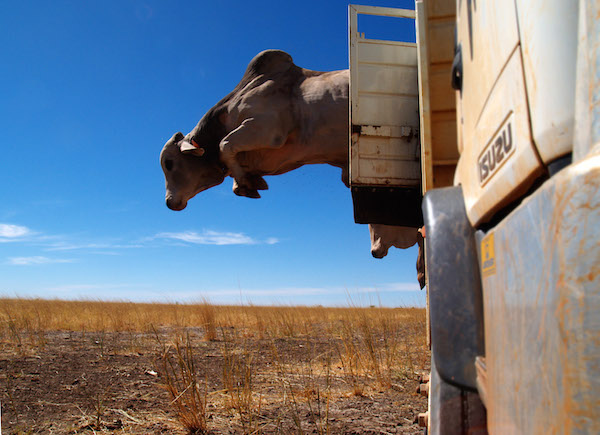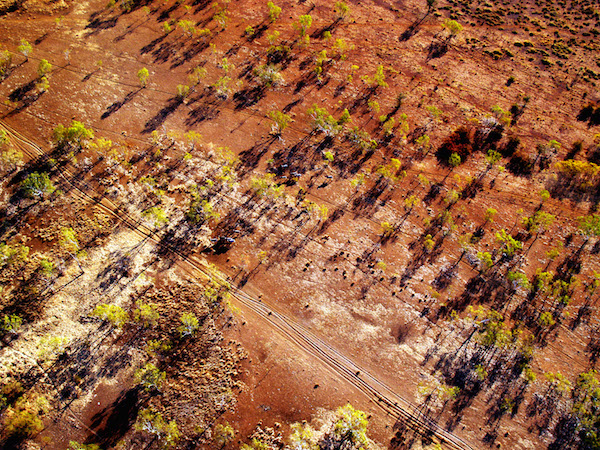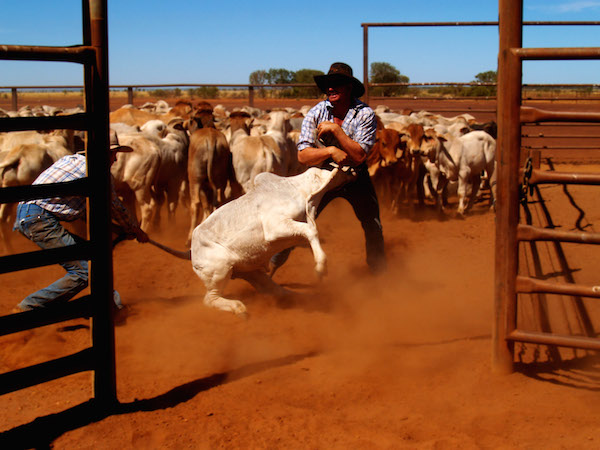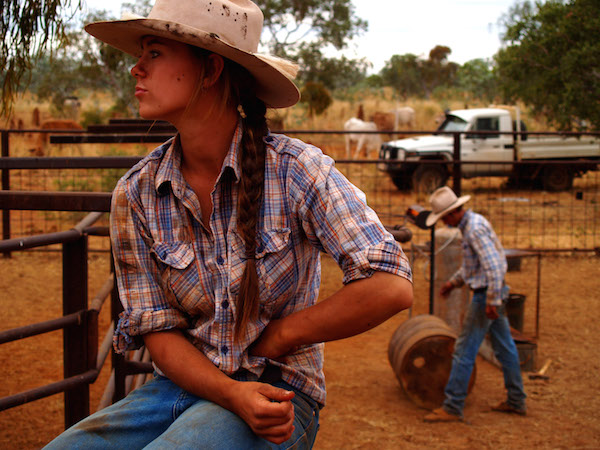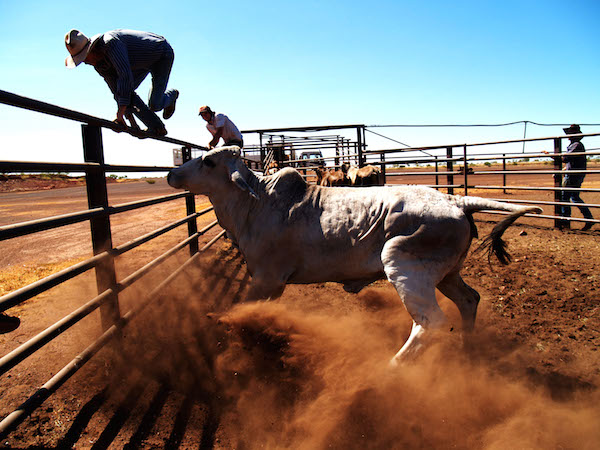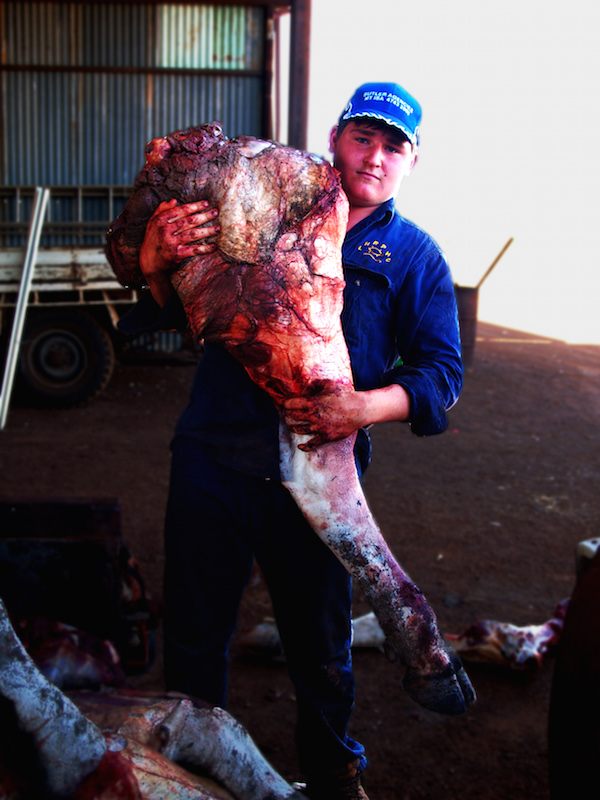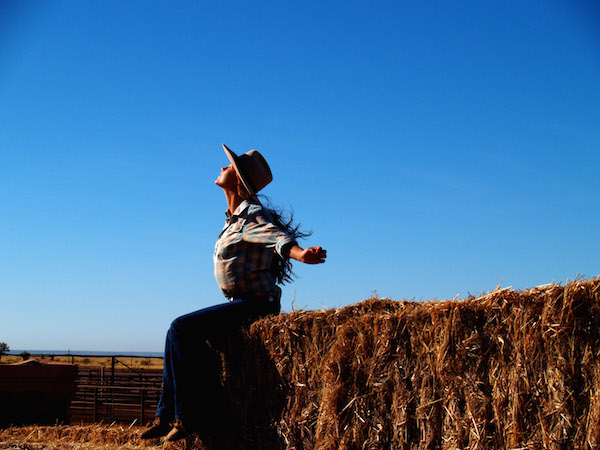Going Back Out Back
This blog is the winning entry in our 2nd Birthday blog competition. Well done Alexandra!
Hi There!
My name is Alexandra and below is my submission for the birthday blog competition. Originally I intended for this entry to be a photo essay because I think that the images themselves give a good insight into the north Australian beef industry. However, as I began to write captions for the photos, the story behind each image began to unfold in front of me. The result is an honest account, told in pictures and words, of my time in the North Australian Beef Industry.
Like so many others who write for this blog, mine is a story of love, of loss, and an endearing passion for the land that only those who have experienced it truly know.
In 2009, fresh out of high school from a NSW coastal city, I went to work for a season on ‘Birrindudu’ – one of Australia’s most remote cattle stations located on the Northern Territory/Western Australia border. Our closest contact with civilization was an Aboriginal community three hours northeast but really, we were nine hours drive from any town. It is my hope that through these photos and their captions, you the reader, can experience a small piece of this isolated and alluring world.
The story of city girl who goes country has been told many times so I’ll spare the tales of how hard it was to give up my manicures and lattes; instead, I’ll let the land do the talking.
Let me take you back out back.
It’s sunrise and the hot wind is already blowing in over the Tanami desert. The Toyotas roll into the yards and break the constant rumble of the cattle which has been keeping the night company. Eight of us jump out and scurry in all directions. With a strike of the match the branding furnace comes alive spewing out more heat in all directions. There is a heavy swish of the knife blades as they take to the sharpener. Dust rises, and thickens as the holding yard stirs. The first lot are being pushed up the race and we settle in for a massive day. The crush slams shut. Hides sizzle, blood drips, beasts move. Its 6.30am, sweat is pouring, and you’ve just branded 1 of 500.
Birrindudu made it easy to fall in love with everything I saw around me. Here, on the station, the colour of the Australian sky that I’d grown up with took on a new and extreme beauty when I had the redness of the desert dirt to contrast it with. The penetrating silence of the nights out in the middle of nowhere was surreal, topped only by the vastness of the outback sky. The natural lines of a beast began to mean something convincing to me when it was my hands that ran over its hide. Even the wind took on a nonchalant quality because it was pregnant with the scent of cattle. At Birrindudu, nature made me privy to her intricacies and wonders, and nothing I had ever seen before filled me with such lonesome contentment.
On stations, the physical demands and personal risk required to complete a work task is unheard of in any other kind of job. But as a ringer you tend to find fun and enjoyment in being a shit-kicker. In the midst of mates the work doesn’t seem so bad, not to mention the range of jobs meant you’re always doing something different. The best of the best stockmen and women are all-time all-rounders. At Birrindudu everyone could weld, run bores, muster, draft, change oil, fix flat tires, shoot, cook, load, unload, shoe . . . the list is never-ending. I never did manage it but I found myself constantly trying to play catch up and figure out exactly how to boldly master so many different skill sets.
The boys in particular had a fearless capability which we relied on whenever something had gone to shit, and the girls, well; they kept everything else running smoothly the rest of the time.
James was a memorable character, a man of pride, integrity, and work ethic. This photo shows his crazy, fearless determination to be the best ringer, the fastest, the most agile, the best all-rounder. How could any of us have known that it was fate knocking at his door?
Before the accident, station life possessed an uncanny gleam and glow about it. I found enjoyment in everything and the combination of the outback, the exhilaration, challenge, laughter, and friendship made time evaporate faster than the steam off the troughs. I never let my mind become preoccupied with the possibility of the experience ending.
And then the accident happened.
Telling the story of James’s death on the station seems trivial and insensitive but that night we all lost more than a mate, we lost one of our team, and we lost a family member. I like to think that James left the realm of mere humans to settle somewhere else with the likes of other bush legends. He’s probably up there arguing with Clancy of the overflow or Ned Kelly about the entry requirements to make it into the Stockman’s Hall of Fame.
After the accident, work fell into a monotonous pattern of muster, draft, weigh, wean, repeat. But now there was no fun, no friends, and no longer enough beauty in the things I had learned to love. Everyone had gone and I wanted out too, but my time in the Territory wasn’t over yet.
From about 100 metres away Tim picked out a fat heifer he wanted for dinner. She was grazing away peacefully on the edge of the scrub, not the slightest inkling that within the hour she’d be on our plates. It was a clean kill, as always.
We drove over and slit her throat to let the blood drain away from the meat and then began to butcher her as if the contents of a box were being slowly and carefully unpacked.
We worked away, slicing, carving, and carrying as the sun busied itself with setting across the flat. When the hooves and hide were all that was left we cleaned our knives and left nature to take care of the rest.
There is something significant and beautiful about being that close to your food source, about being connected to it enough to feel the blood drip onto your hands and to feel the warmth of the meat as you respectfully take it away from the bone. I wonder how many supermarket shoppers ever get to speculate what happened prior to the shrink wrapped meat they toss in their trolleys.
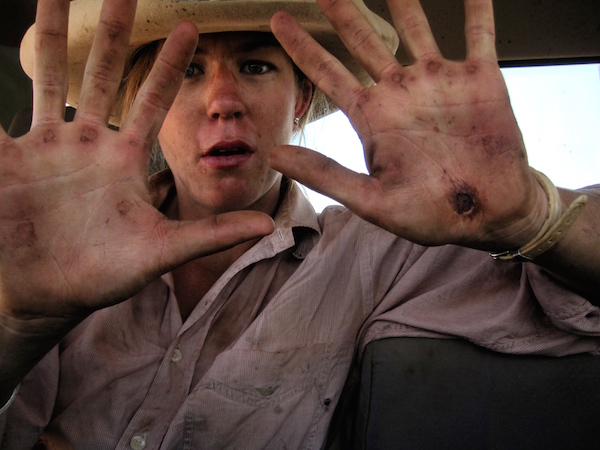
This is what it looks like to live and breathe cattle. This is what it looks like to work a job that is unforgiving in a place that is remote and harsh.
After the accident and by the ten month mark my thoughts and feelings about Birrindudu were already tainted and my romantic notions of horses and land were dispelled by the 15 hour days of shooting lame cattle in the thick of drought and dust storms.
I took this photo after my final day of work when I’d been gripping the bike handles for so long and hard that my body protested with two handfuls of blisters.
When we finally yarded the cattle I looked to the horizon. I saw the day turn to night on the edge of the desert and I knew that my time was up. The next day I flew out on the mail plane never to return again.
My time at Birrindudu indebted me to the NT outback. Not only is it the most imposing, majestic, and beckoning place in the country, it’s people are the lifeblood of Australia.
It took me a while to believe it, but these days I accept that I won’t have the chance to go back out there again. It seems that my inner cowgirl sold out in the battle against my city slicker, latte-sipping traits. Every now and again she makes a reappearance. Like when I pipe up over the live export ban among my animal-activist friends, or when my answer to the question “Strawberry cider or Indian Pale Ale?” is “You got any XXXX Gold?”. I think it was even my inner ringer that revived the term ‘bloody oath’ among my feminist reading group.



